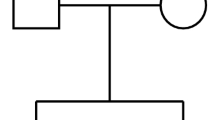Abstract
Covariance between relatives in a multibreed population was derived for an additive model with multiple unlinked loci. An efficient algorithm to compute the inverse of the additive genetic covariance matrix is given. For an additive model, the variance for a crossbred individual is a function of the additive variances for the pure breeds, the covariance between parents, and segregation variances. Provided that the variance of a crossbred individual is computed as presented here, the covariance between crossbred relatives can be computed using formulae for purebred populations. For additive traits the inverse of the genotypic covariance matrix given here can be used both to obtain genetic evaluations by best linear unbiased prediction and to estimate genetic parameters by maximum likelihood in multibreed populations. For nonadditive traits, the procedure currently used to analyze multibreed data can be improved using the theory presented here to compute additive covariances together with a suitable approximation for nonadditive covariances.
Similar content being viewed by others
References
Arnold JW, Bertrand JK, Benyshek LL (1992) Animal model for genetic evaluation of multibreed data. J Anim Sci 70:3322–3332
Chang HL, Fernando RL. Grossman M (1991) On the principle underlying the tabular method to compute coancestry. Theor Appl Genet 81:233–238
Elzo MA (1983) Multibreed sire evaluation within and across countries. PhD thesis, University of California, Davis
Elzo MA (1990) Recursive procedures to compute the inverse of the multiple trait additive genetic covariance matrix in inbred and noninbred multibreed populations. J Anim Sci 68:1215–1228
Elzo MA, Bradford GE (1985) Multibreed sire evaluation procedures across countries. J Anim Sci 60:953–963
Elzo MA, Famula TR (1985) Multibreed sire evaluation procedures within a country. J Anim Sci 60:942–952
Emik LO, Terrill CE (1949) Systematic procedures for calculating inbreeding coefficients. J Hered 40:51–55
Fernando RL, Grossman M (1989) Marker-assisted selection using best linear unbiased prediction. Genet Sel Evol 21:467–477
Hakim AF, Van Vleck LK, Cundiff LV, Koch RM, Crouse JD, Boldman KG (1990) Estimates of genetic and phenotypic covariance among carcass and sensory characteristics of crossbred cattle with multiple traits animal model. J Anim Sci 68 (suppl 1):238–239
Henderson CR (1973) Sire evaluation and genetic trends. In: Anim Breed Genet Symp in Honor of Dr. J. L. Lush, Champaign, Illinois Am Soc Anim Sci and Am Dairy Sci Assoc, pp 10–41
Henderson CR (1976) A simple method for computing the inverse of a numerator relationship matrix used in prediction of breeding values. Biometrics 32:69–83
Kempthorne O (1954) The correlation between relatives in a random mating population. Proc Roy Soc London B143:103–113
Kempthorne O, Folks L (1971) Probability, statistics, and data analysis. Iowa State Univ Press
Lande R (1981) The minimum number of genes contributing to quantitative variation between and within populations. Genetics 99:541–553
Lo LL, McLaren DG, McKeith FK, Fernando RL, Novakofski J (1992) Genetic analyses of growth, real-time ultrasound, carcass, and pork quality traits in Duroc and Landrace pigs. II. Heritabilities and correlations. J Anim Sci 70:2387–2396
Mather K, Jinks JL (1971) Biometrical genetics, 2nd edn. Cornell Univ Press, Ithaca, New York
Nyquist WE (1990) Statistical Genetics. Unpublished class notes. Agronomy Department. Purdue University, West Lafayette, Indiana
Quaas RL (1988) Additive genetic model with groups and relationships. J Dairy Sci 71:1338–1345
Quaas RL, Anderson RD, Gilmour AR (1984) BLUP school handbook; use of mixed models for prediction and estimation of (co)variance components. Animal breeding and Genetics Unit, University of New England, NSW 2351, Australia
Swan AA, Kinghorn BP (1992) Evaluation- and exploitation of crossbreeding in dairy cattle. J Dairy Sci 75:624–639
Van Vleck LD, Hakim AF, Cundiff LV, Koch RM, Crouse JD, Boldman KG (1992) Estimated breeding values for meat characteristics of crossbred cattle with an animal model. J Anim Sci 70:363–371
Wei M, Van der Steen HAM, Van der Werf JHJ (1991a) Relationship between purebred and crossbred parameters. I. Variances and covariances under the one-locus model. J Anim Breed Genet 108:253–261
Wei M, Van der Steen HAM, Van der Werf JHJ (1991b) Relationship between purebred and crossbred parameters. II. Genetic correlation between purebred and crossbred performance under the model with two loci. J Anim Breed Genet 108:262–269
Wright S (1968) Evolution and the genetics of population, vol 1. Genetics and biometrical foundations. Univ Chicago Press
Author information
Authors and Affiliations
Additional information
Communicated by E. J. Eisen
Supported in part by the Illinois Agricultural Experiment Station, Hatch Projects 35-0345 (RLF) and 35-0367 (MG)
Rights and permissions
About this article
Cite this article
Lo, L.L., Fernando, R.L. & Grossman, M. Covariance between relatives in multibreed populations: additive model. Theoret. Appl. Genetics 87, 423–430 (1993). https://doi.org/10.1007/BF00215087
Received:
Accepted:
Issue Date:
DOI: https://doi.org/10.1007/BF00215087




